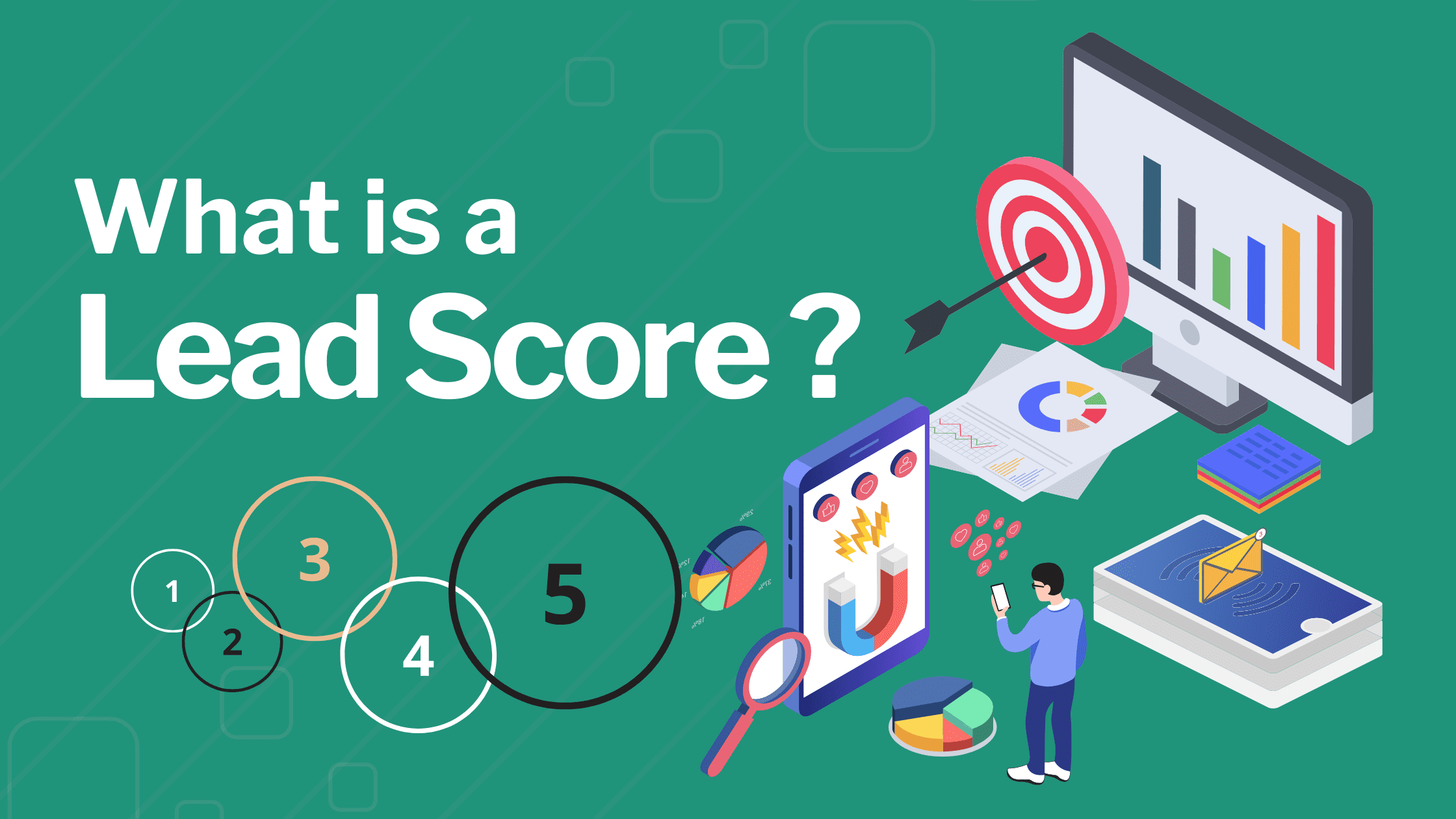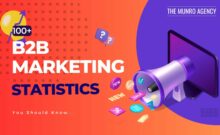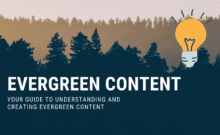Your first concern after launching marketing campaigns is attracting enough sales leads. At first, a few of your marketers can manually manage and convert the incoming leads. However, as you refine your inbound marketing strategies, you attract hundreds or thousands of leads.
Your marketing and sales teams need a system of categorising leads to estimate their sales readiness. Even if you only have a couple of hundred leads in your CRM, how can you quickly identify which ones are ready to buy and which ones are not?
The solution to this problem is a lead scoring model, which differentiates prospects based on their interest in your products.
Let us discuss the lead scoring process further to determine if it is essential for your type of business. You will also learn how to create an effective lead scoring system to improve lead quality and sales.
Table of Contents
What is Lead Scoring?
Lead scoring is a method used in marketing and sales to rank leads according to their potential value to the company. This helps businesses prioritise their efforts and allocate resources more effectively by identifying which leads are most likely to become customers. In lead scoring, a score is assigned to each lead based on a variety of factors such as demographic information, behaviour on the company’s website, and engagement with the company’s marketing materials. This score helps determine which leads should be pursued first, and which ones may require more nurturing before they are ready to make a purchase.
A high score means that the prospect is highly likely to buy; marketers will send leads with high scores to sales and nurture those with low scores.
Though companies adopt different models of assigning lead scores, the common attributes that marketers look at include customer data and behaviour. Potential buyers that provide contact information usually attain a high lead score.
Marketers also consider the website pages that prospects visit. Buyers that visit high-value pages are easy to convert. Analysing past leads can also help in assigning values. Your team can assess the behaviour of past leads that became loyal customers to develop a relevant lead score model.
Leads accumulate points as they continue to engage with your organisation. For instance, a new website visitor gets certain points based on their behaviour. The visitor may return to provide optional information such as the phone number and get more points.
The sales and marketing teams determine the lead score for each attribute depending on a variety of factors. For example, visiting the pricing page or about us page may attract 5 extra points. A decision maker may gain 10 to 25 points for a B2B business. On the contrary, visiting the careers page leads to negative scores.
The in-house team sets the number of points for high-value leads. The team will reach out to such leads, starting with those with the highest number of points as they are the most likely to be interested in your products or services.
Lead scoring models fall into two major categories: explicit lead scoring and implicit lead scoring. Let’s dive into these categories.
Explicit Lead Scoring
Explicit lead scoring uses data obtained from leads. A potential buyer fills out forms with the name, job title, location, email address, company revenue, and employer or company. The sales and marketing departments assign scores according to this information.
As explicit data shows the buyer’s problems or pain points, the sales departments can narrow down and tailor their pitches to reach the right audience. A sales rep can also look at explicit information from leads and determine if they are decision-makers.
Many lead scoring tools and methods rely on explicit data. Marketers utilise this data to increase the efficiency and productivity of their marketing efforts. However, the team may rely on inaccurate data to assign point values to prospects.
Some online buyers fill out forms with fake information to protect their identity. Others provide fake contact details to avoid calls and emails from sellers. Another setback with explicit lead scoring data is that your team or lead scoring tool may make wrong inferences or assumptions.
Implicit Lead Scoring
Implicit lead scoring focuses on the observed behaviour of leads. Behavioural scoring relies on actions such as signing up for a webinar, clicking on web pages, and downloading guides or manuals.
Implicit scoring also considers inferred information such as IP address or location. The lead’s behaviour indicates their purchase intent. However, the criteria may lead the sales department to the wrong prospects.
Every buyer has a unique conversion path. For instance, a qualified lead may learn about your business from another buyer or website. In addition, some buyers can check all the boxes for high purchase intent and yet never buy any product even with calls and emails.
Scoring criteria that combine explicit and implicit data are more effective than those that rely on one data type.
Why is Lead Scoring Important?
Marketers generate leads daily and send them to the sales teams. Marketing surveys have proved that sales teams qualify about 27% of leads from marketers. Further, only 25% of the sales leads in your business are worth sending to sales.
The low percentage of hot leads means that you need a system for analysing leads fast. You must be able to identify valuable leads at a glance. Marketers nurture low-value prospects to increase their score before sending them to sales.
A lead scoring model streamlines lead generation and conversion processes. The model saves your sales and marketing teams the time and effort wasted on low-quality leads. In addition, you will reduce lead generation costs significantly, especially for long sales cycles.
Lead scoring also streamlines your sales and marketing activities. In-house marketers and sales reps have a predetermined method of ranking leads. The teams make quick decisions about improving inbound marketing activities, lead nurturing, and proper channels for outreach.
A lead score system will improve conversion rates, leading to higher sales and revue. The sales team sends the right marketing messages based on the customer’s position in the buying cycle. Consequently, customers have a better experience without inappropriate calls and messages.
What Is Predictive Lead Scoring?
Conventional lead scoring relies on the decisions of the marketing and sales teams to assign values or points to prospects. Although the teams have a synchronised system of assigning points, human errors are possible.
A predictive lead scoring model uses AI and machine learning to analyse data. AI uses a quantitative method to analyse and predict customer behaviour. AI can predict if new leads will become sales-qualified leads based on previous patterns of won sales.
Machine learning observes the behaviours and demographics of your target audience and compares them to your ideal customer. The algorithms can identify the prospects in your target audience that are highly likely to convert into sales.
Predictive lead scoring requires integrating your CRM software with your lead grading system. Ensure that your customer profiles and data in the CRM software are updated for accurate results.
Scoring software eliminates human error in estimating customer lifetime value. The algorithms are accurate in predicting conversion rates and segmenting customers. Software is reliable as long as the marketing and sales teams record accurate customer demographics.
Predictive scoring can reduce lead generation costs and speed up lead scoring. However, the system requires prior knowledge of leads to score leads and predict their behaviour. Your team must record and update behavioural patterns in your customer database.
Combining traditional lead scoring and predictive lead scoring is advisable to exploit all lead generation opportunities.
Does Your Business Need Lead Scoring?
Before choosing lead scoring models and software, you need to determine if your business needs lead scoring. The process is unnecessary if your sales cycle is short. Your sales team can convert leads fast without scoring leads.
A new B2C business may not need a lead scoring system to manage leads. If your company creates a few leads per day, your marketing and sales team can focus on lead generation. You can explore new channels, tools, and strategies to increase leads.
Your business may not require lead scoring if your sales reps achieve high conversion rates with existing marketing software. However, lead scoring models are necessary and useful if the team needs to generate better leads or become more efficient in converting good leads.
You may want to start with a manual scoring system, but you need a streamlined lead scoring model as your business grows.
Choosing a Lead Scoring Model for your Business
When choosing a lead scoring system, you must understand that one model does not fit all business models. Some small businesses with a short sales cycle can generate, score, nurture, and convert leads manually.
Your business model and sales cycle determine the suitable scoring model. The next important consideration is your sources of data. What kind of data are you collecting from your target audience?
Here are some lead scoring models you can develop from different data types.
1. Demographic or Firmographic Data
Demographic information helps B2C companies determine if leads fit their ideal customer profile. You can assign values to specific attributes of your ideal buyer persona, such as location, status, age, job title, or gender. Landing pages should prompt visitors to provide such data.
B2B companies rely on firmographic data in lead scoring. The information includes company size, revenues, location, and industry. You also need details on the visitor’s position or job title in the company. A senior manager earns higher points than a regular employee in the lead score.
You can reduce points if the demographic or firmographic data does not meet your prospective customer profile. For instance, leads outside your geographical location might get negative points if you’re looking to sell your products or services locally.
2. Purchase Intent
A prospect’s interactions with your website and digital platforms reveal their purchase intent. For instance, a prospect may watch a product demo or ask about its availability in their location. You can conclude that the prospect has the intention to buy from your business.
Other pointers to purchase intent include reading blog posts about your products and reviews about your brand. Using purchase intent data to score leads helps you reach potential customers with a high conversion probability early.
3. Online Behaviour
Developing a scoring system based on online behaviour requires an assessment of past trends. Predictive scoring makes the process faster and more accurate. Consider how previous leads become customers. Which pages did they visit first? Which offers did they take?
If your customers first visit high-value pages or forms, assign higher lead scores to such actions. For instance, a visitor that signs up for a product demo earns a higher lead score than one that closes the page fast. Visitors with multiple page views should earn higher points as well.
Some online behaviour should lead to negative scores. For example, you can deduct points from visitors that have stopped downloading your offers or visiting your website for a long time.
4. Email Engagement
Many companies rely on email marketing to nurture and convert leads. An opt-in on your landing pages is a positive sign that the prospect is interested in your brand. However, you cannot determine with certainty if purchase intent is high.
After sending them emails, you can analyse your leads further with their click-through and open rates. Your team should also consider if the email recipients are interested in educative information or promotions. You should adjust your outreach and messages accordingly.
Your lead scoring model can assign more points to recipients that open all or most of your emails, especially product demos. An opt-out can lead to losing points because it shows that the prospect has lost interest in your brand.
5. Negative Attributes
We have discussed prospects that opt out of your emails or fail to meet your demographic criteria. Such attributes should reduce their score. Other characteristics that should automatically lead to a negative score include internal team members, employees, or students.
Your relatives or friends are less likely to buy from you. In addition, web visitors that provide spam information in the contact forms should get a negative score. For instance, did they type random letters or forget to capitalise names? Did they fill several fields wrong?
Any career page visitor is interested in something other than buying your products. Check the contact information for email addresses from your direct competitors. You can assign a negative score from such leads and focus on more relevant ones.
6. Social Media Engagement
Social media platforms are great channels for lead generation. For social media leads, consider their frequency of comments, likes, retweets, and shares. Your blog posts and promotional emails should have sharing options for the readers to increase engagement.
Give high value to readers and social media followers that enjoy your content and share it constantly. Check the engagement with your social media ads and assign points accordingly.
7. Responsiveness to Promotions
The scoring criterion is necessary when you start promoting your business. The interactions with promotions on digital spaces such as social media, search engines, and video ads can help in grading leads. Digital platforms give reports after a campaign to help you gather such data.
High responsiveness to your marketing campaigns indicates high buying intent. Your sales team should reach such leads immediately before they explore alternatives.
Best Lead Scoring Practices to Improve Lead Quality
You now have several lead scoring models to streamline your lead nurturing and conversion processes. Your sales team can focus their efforts on high-quality leads and less time on low-quality leads. Lead scoring does more than help you manage thousands of leads.
Use lead scoring models to improve the quality of leads from future campaigns and marketing strategies. Consequently, you will increase the percentage of convertible leads and boost sales.
The strategies below will help you improve lead quality through lead scoring:
1. Use more than one lead scoring model
You should understand by now why you need more than one lead scoring model for your business. Your team needs to collect and score customer data from all channels. Multiple models are also necessary if you offer more than one product.
Buyer personas are different for each product. Hence, each product requires a unique scoring model to maximise conversions.
2. Define the criteria for qualifying leads
Each lead scoring model requires criteria for qualifying and disqualifying leads. At what number of points do the sales reps contact the lead? When does the team stop lead nurturing and focus on conversions?
Involve the marketing and sales reps in determining the score that defines sales-qualified leads. The contribution from both teams is essential to avoid moving leads back and forth cycle.
3. Assign points based on the conversion process
Behavioural analysis of past clients can help you determine how close prospects are to conversion. You can tell prospects’ actions and attributes that push them closer to conversion. Actions close to conversion, like price inquiries, should earn the highest points.
A new web visit or signing up for free emails should earn lower points. However, the leads can earn higher lead scores for opening or replying to promotional emails. Set a minimum score that qualifies prospects for lead nurturing processes.
4. Subtract points for specific attributes and actions
Your sales and marketing department will wear out if you keep every lead in your marketing funnel. Negative scoring will eliminate prospects that will never use your products. Unsubscribing to your email or pessimistic comments on social media should attract a negative score.
Subtract points for inaction, even from previously active leads. For instance, a lead can stop opening emails or responding to calls. Negative scoring may push leads back to the nurturing stage for the marketing team to choose the appropriate action to take in order to win them over.
5. Utilise automation tools
Automating marketing and lead generation processes reduce human errors and boost efficiencies. A manual lead scoring process is time-consuming, especially for businesses that generate hundreds of leads daily. Automation allows your sales and marketing team to focus on increasing sales.
Lead scoring software updates your customer database automatically as new and existing prospects interact with your business. AI and machine learning will generate real-time insights into leads.
Your marketing team should be involved in assessing the automated process. The team must check the accuracy of the reports as lead scoring software relies on different data sources. If they are inaccurate, the insights will be unreliable.
6. Evaluate and improve the scoring model
It takes effort and time to develop scoring models for each product. However, the effectiveness of the models declines with changes in the customer journey. You may also explore new channels of lead generation.
Assess the lead scoring model constantly to identify any areas that need change. You will discover new actions or inactions that require scores. After implementing the lead scoring models, you may also change the value attached to actions and attributes.
7. Assess the impact on sales and ROI
Your lead scoring model should boost sales and increase your ROI. The model may be effective in ranking prospective customers but lacking in boosting sales. Consider changing the model if the increase in sales is minimal.
If you choose automated lead scoring, the return on investment should be significant. Evaluate the model before dismissing it as ineffective. Small changes, such as adding or removing attributes or actions from the model, may improve the results.
How to Get Started
To get started with lead scoring in your own business, follow these steps:
- Identify the key factors that are likely to indicate a lead’s potential value to your company. These factors will depend on your target market, products or services, and sales process, but some common factors include demographic information, firmographic information, behavioural data, and engagement data.
- Develop a scoring system that assigns a numeric value to each of these factors. For example, you might assign a higher score to leads who have a higher level of seniority at their company or who have shown a strong interest in your products or services.
- Create a scoring model that uses the values assigned to each factor to calculate a total lead score for each lead. This score can then be used to rank leads and prioritise follow-up efforts.
- Implement the scoring system and begin tracking the scores for each lead that comes into your system. You can utilise this data to identify patterns and trends and continually refine and improve your scoring model over time.
- Use the lead scoring system to prioritise your follow-up efforts and allocate your resources more effectively. It allows you to focus on leads with high scores while providing additional nurturing and support to leads with lower scores.
It’s important to note that lead scoring is not a one-time process – it is an ongoing effort that requires regular monitoring and refinement. As your business grows and changes, your lead scoring system should evolve to reflect these changes and ensure that you are effectively identifying and prioritising your best leads.
Marketing Automation Software is Your Friend
Marketing automation software can make lead scoring easier by providing a platform for tracking and analysing data on leads, as well as automating many of the tasks involved in lead scoring and prioritisation. This can help businesses save time and effort and make more effective use of their resources.
The Munro Agency’s marketing automation software provides a range of tools and features that can support lead scoring, including the following:
-
Data tracking and analysis:
The software tracks and analyses data on leads, such as demographic information, firmographic information, behavioural data, and engagement data. This data can then be used to calculate lead scores and identify patterns and trends.
-
Lead scoring model:
It includes a customisable lead scoring model that allows businesses to assign values to each of the factors that are used in their scoring system. The model then considers these values to calculate a total lead score for each lead.
-
Lead prioritisation:
The software can automatically prioritise leads based on their scores, so businesses can focus their efforts on the leads that are most likely to convert.
-
Automation of lead nurturing and follow-up:
It gives you the ability to automate many of the tasks involved in lead nurturing and follow-up, such as sending emails, scheduling calls, and providing tailored content to leads based on their scores and engagement levels.
Overall, The Munro Agency’s marketing automation software provides a comprehensive platform for managing lead scoring and prioritisation, which helps businesses save time and effort while improving their sales and marketing performances.










Leave a Comment